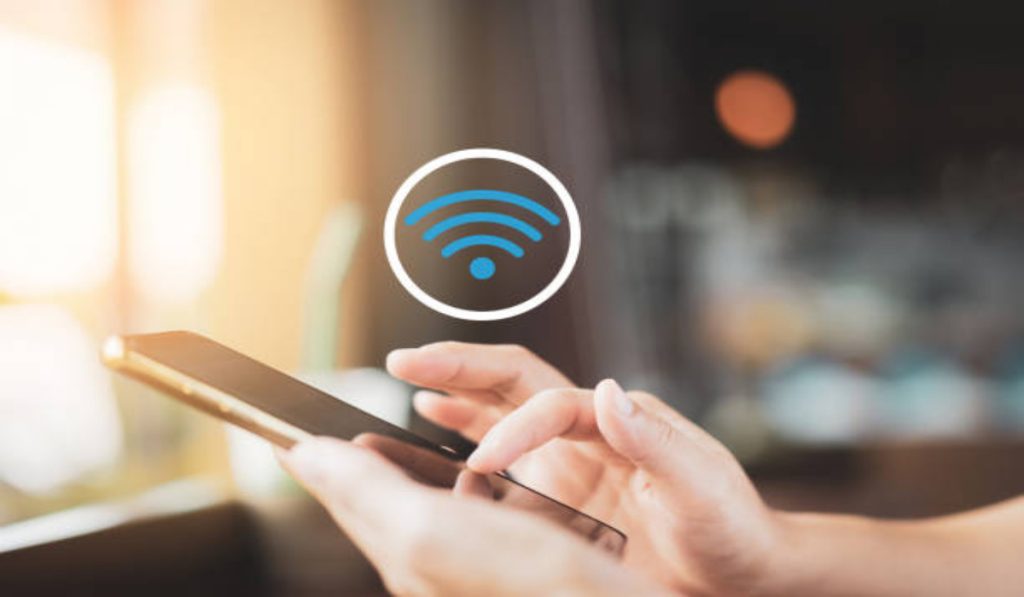Generally, cybersecurity experts advise people to avoid using public Wi-Fi since it makes them susceptible to cyberattacks. Having your own wireless access point is always preferable, and anyone with a smartphone and a mobile internet plan can achieve this with ease.
However, you should also note that cell phone hotspots still need to be secured, even though they are typically safer than open Wi-Fi connections. As such, if you don’t already know how, it’s important to learn how to secure a cell phone’s hotspot.

Luckily, we’ve created this guide to teach you how to secure a cell phone’s hotspot. Keep reading to learn everything you need to easily secure a cell phone’s hotspot.
How to Set up a Cell Phone’s Hotspot
Before attempting to secure a phone’s hotspot, you should first learn how to set up the hotspot. If you don’t already know this, the instructions below will guide you.
Go to Settings on Android, then hit Connections. Move the Mobile Hotspot slider to the right after selecting Mobile Hotspot and Tethering from the drop-down menu. You can see your network name, password, band, and a Configure button by tapping Mobile Hotspot.
On an iPhone, navigate to Settings and select Mobile Data. Next, go to Settings or Personal Hotspot and tap Personal Hotspot. The Allow Others to Join slider can be moved to the right in this area. Right beneath this button, you should be able to see your password.
Best Ways to Secure a Cell Phone’s Hotspot
Even though a smartphone’s hotspot is simple to set up, protecting it is another story entirely. If you don’t secure a cell phone’s hotspot, it could get compromised, and any other devices that link to the hotspot are also at risk.
Furthermore, if your smartphone hotspot is not adequately protected, outsiders could be able to connect to it without your approval. Your connection can get slower as a result, and other people could exhaust your mobile data, causing you to exceed your carrier’s plan. Let’s walk you through the different ways you can secure a phone’s hotspot, in the sections below.
Change the Service Set Identifier (SSID)
When configuring a phone’s hotspot, you’ll first need to modify your Service Set Identifier (SSID), which is your network’s name. Instead of using the name that your smartphone automatically assigns (iPhones and Android smartphones do this), come up with your own as a way to secure a cell phone’s hotspot. Make sure the name is original and unconnected to the kind of gadget you’re using.
Use the Most Secure Option for Security Protocol
All devices with wireless connectivity have to adhere to the security standard known as Wi-Fi Protected Access (WPA). You’ll most likely be able to select from a number of iterations while setting up your smartphone hotspot, such as WPA2-Personal, WPA2/WPA3-Personal, WPA3-Personal, etc. The most secure option is WPA3, but if it’s not available on your device, choose the next-best option to secure your phone’s hotspot.
Use a Unique Password
Passwords are automatically provided to smartphone hotspots, just like SSIDs are. Although the one your phone is employing might appear to be powerful, if you check closely, it is probably not. Ideally, you should make sure your password is hard to guess, and this is one of the most important ways to secure a smartphone’s hotspot.
For instance, it should consist of a mix of capital and lowercase letters, digits, and special characters. Essentially, make sure to create a strong password that you can easily remember, then use it in place of the default one provided. This way, you can easily secure a phone’s hotspot.
Use a Virtual Private Network (VPN)
By encrypting your device’s traffic and concealing your information (such as your IP address, location, and personal data) from others, a Virtual Private Network (VPN) creates a secure link between you and the World Wide Web.
As such, a good way to secure a cellphone’s hotspot is to choose from a variety of excellent VPN programs available on both the App Store and the Google Play Store. In any event, using a VPN will provide your smartphone hotspot with an additional degree of protection and privacy.
Set a Data Limit
Even if this option doesn’t do much to secure a smartphone’s hotspot, it’s still a good idea to do it. Set a data restriction by going to Advanced in the same menu where you adjusted your hotspot settings.
This is an excellent way to track how much data you still have and control what other people connected to your hotspot are using it to do. The hotspot will disable automatically and all connected devices will disconnect once the specified data limit is exceeded.
Summarily, it’s important to secure a phone’s hotspot to reduce the risk of malicious attacks or parasitic data drain from external devices you don’t own. Follow our instructions in this guide and you should be able to bypass these risks without worries.

